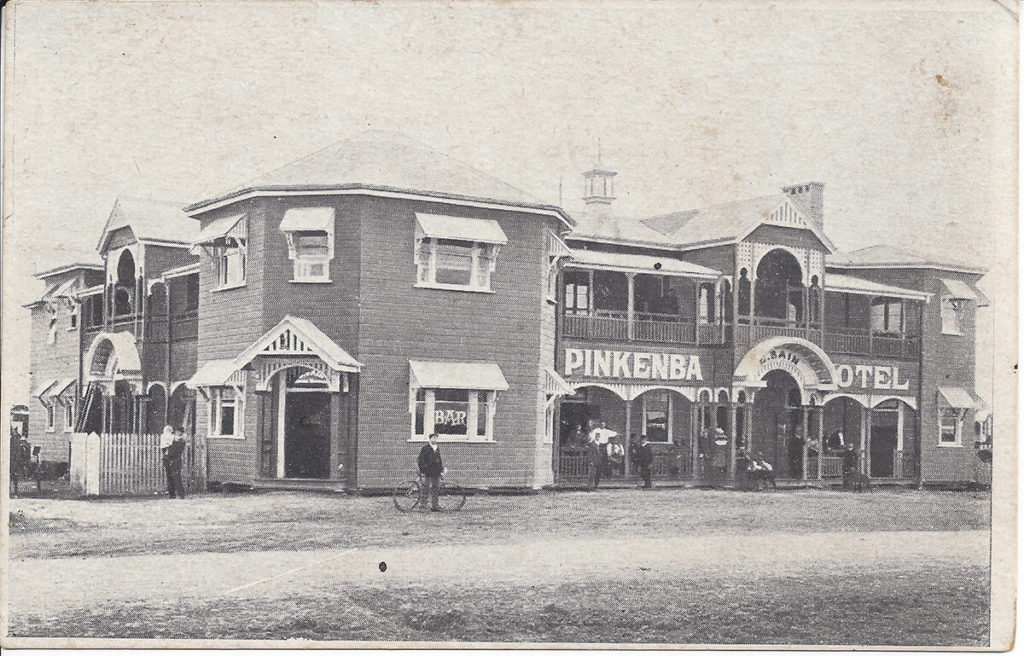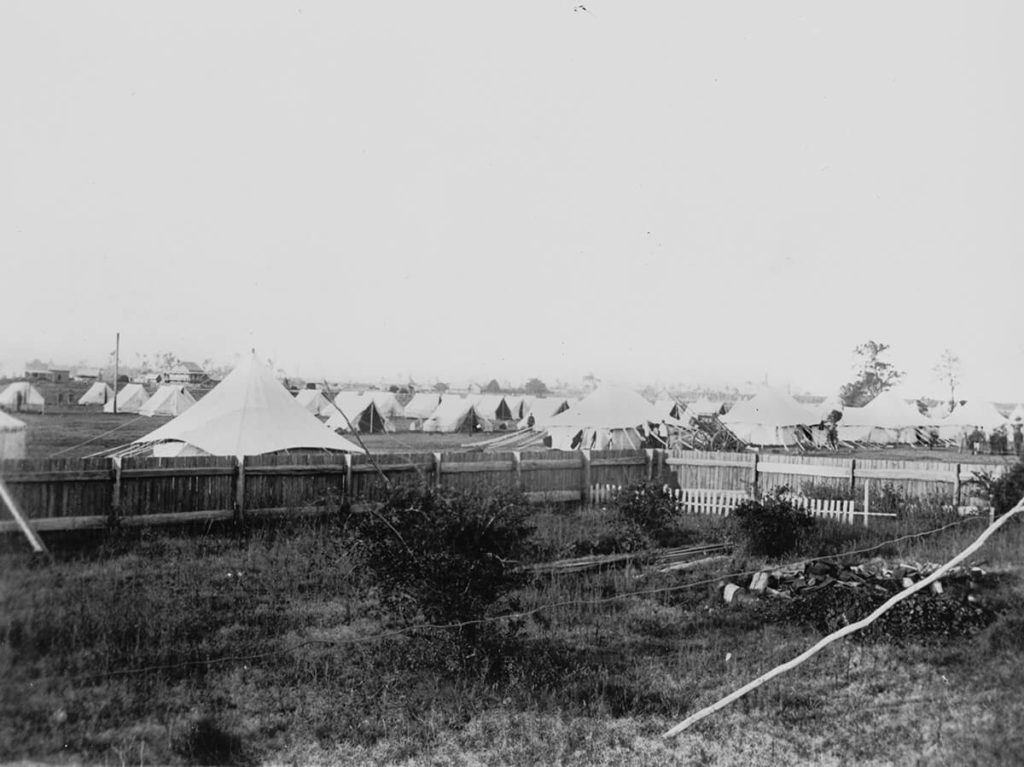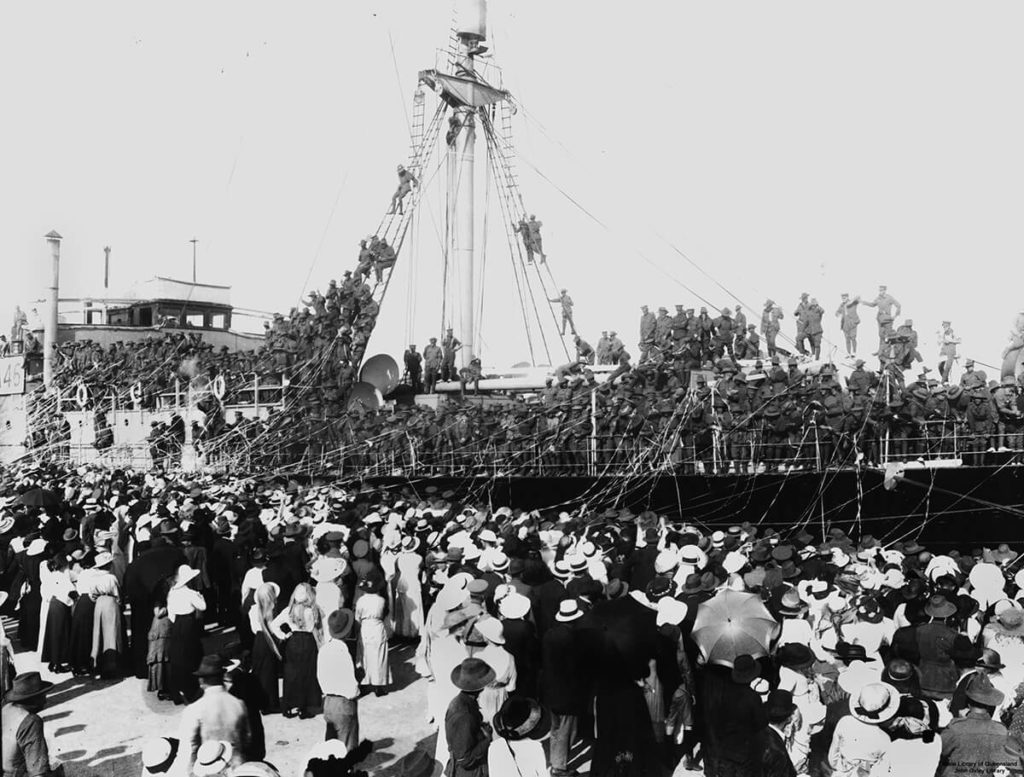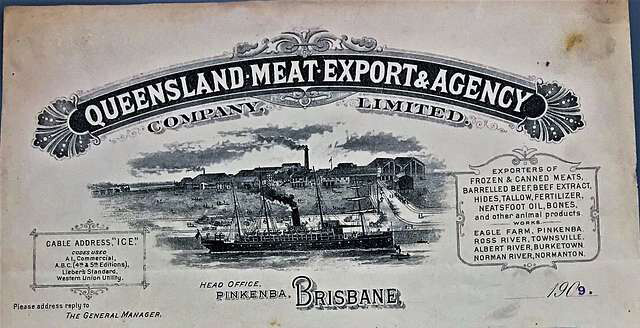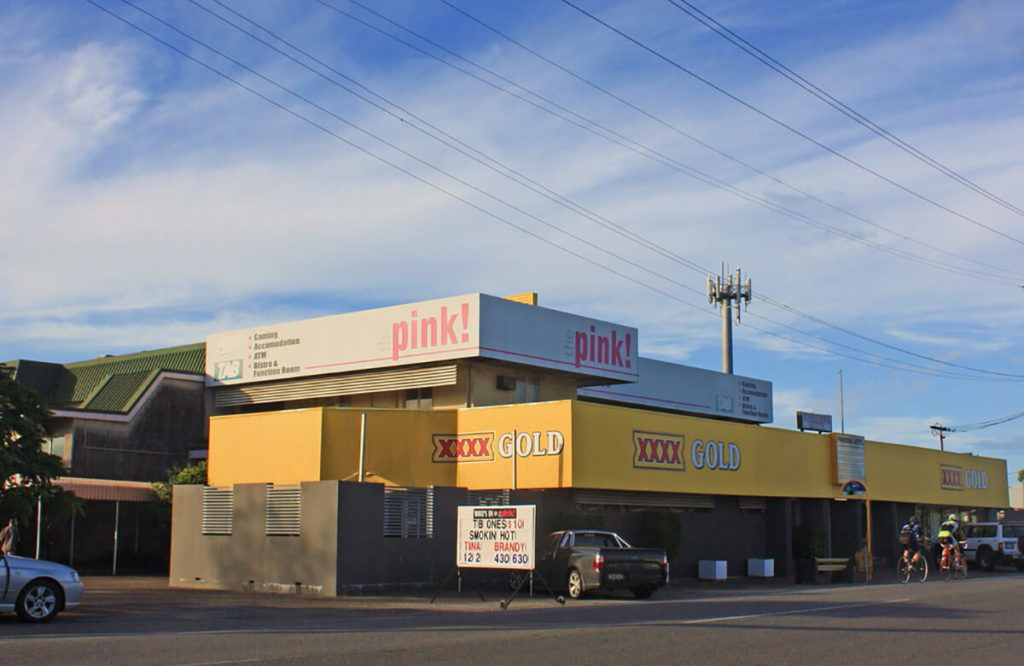Trade Coast Hotel, Pinkenba 1910
(aka The Pinkenba Hotel)
Gaining its name from the Aboriginal word binkinba meaning “place of land tortoise”, Pinkenba is an industrial and residential suburb on the north side of the Brisbane River, 11 km north-east of Central Brisbane and the name given to the railway station when the line opened in 1897. Nearby Myrtletown, originally an independent suburb, ultimately became a neighbourhood within Pinkenba.
Now an industrial and portside hub, Pinkenba has an historical trail which was designed on behalf of the Pinkenba Community Association, the Port of Brisbane and Brisbane City Council. The Trail identifies a number of heritage-listed sites, including Pinkenba War Memorial, Myrtletown Reserve, RAN Station 9, the Pinkenba State School.
The Pinkenba Hotel was built in 1910 by Scottish immigrant Ellen Bain in the heart of Brisbane’s then thriving port area where, among other things, Australian soldiers began their journeys to three wars, the Queensland Meatworks was first established, and was historically known as a residential and farming locality, supporting Brisbane.
Part of the region’s rich history is the Trade Coast Hotel (aka The Pinkenba Hotel) which first opened its doors to patrons in November 1910. Originally the Myrtle Hotel located in Myrtletown, when the licence was finally granted, the hotel was cut into pieces and transported by bullock to the location where it currently sits today.
The now Trade Coast Hotel, Pinkenba 1910, one of the oldest in Brisbane, has a century long history in the Pinkenba community and highlights the crucial role the hotel and where it stands, played in Queensland’s colourful past.


